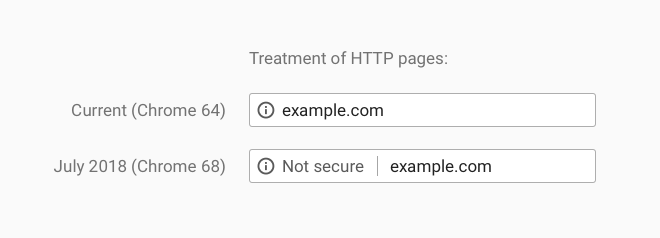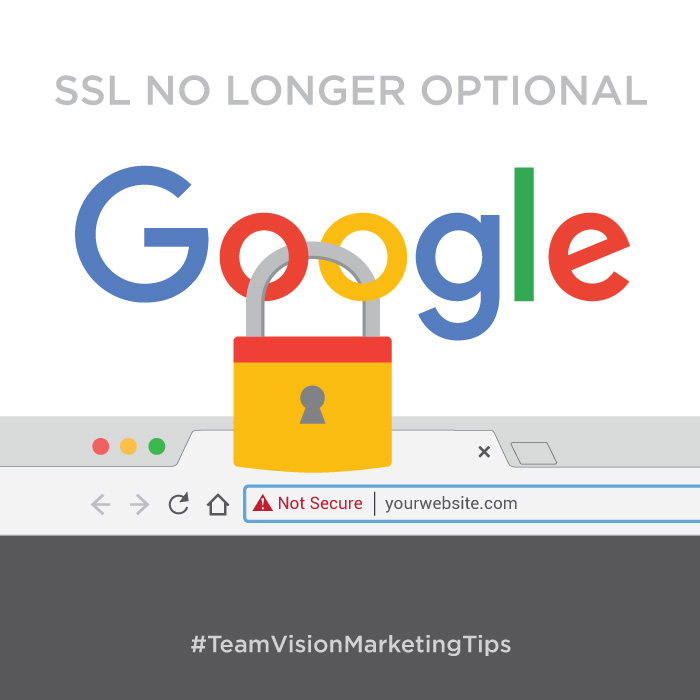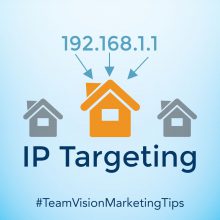HTTPS IS NO LONGER OPTIONAL FOR YOUR WEB SITE
At Team Vision Marketing, we have been building web sites for Hawaii clients for over 20 years. Up until just a few years ago, many client sites that didn’t include ecommerce, or that didn’t request or store confidential information, didn’t require HTTPS encryption installed on the site. An SSL (Secure Socket Layer) Security Certificate was an added annual recurring expense that many clients didn’t feel they needed, and quite frankly, best practices didn’t yet call for.
What is an SSL Certificate? And How Does It Work?
SSL (Secure Sockets Layer) is the standard security technology for establishing an encrypted link between a web server and a browser. This link ensures that all data passed between the web server and browsers remain private and integral. After July 2018, Your Site Will Show as “Not Secure.”

Image: Beginning July 2018, your non-HTTPS web site will show as “Not Secure” as shown above.
For the past several years, Google has been moving customers toward a more secure web by strongly advocating that ALL web sites adopt HTTPS encryption. Within the last year, Google has been labeling more and more HTTP (Non-HTTPS) web sites as “NOT SECURE” in order to help users understand that they could be at risk by using a particular site.
Google has now announced that beginning in July 2018, it will mark ALL HTTP pages as “NOT SECURE.” If you’re still operating a non-secure web site, this warning message will more than likely deter users from proceeding to your site (just imagine users seeing the following warning before entering your site: “NOT SECURE. Would you still like to proceed to this web site?”). It will also have a negative effect on your search engine rankings as Google’s algorithms will place a preference on secure web sites for search engine result rankings. The adoption of SSL/TLS encryption for online organizations has become a security best practice.
Moving to HTTPS is now easier than ever and the cost of annual SSL certificates has also dropped significantly in recent years. And, if you used a third-party CMS such as WordPress, you may be able to set up the SSL yourself using one of WordPress’ popular SSL plugins like Really Simple SSL.
If you need help setting up HTTPS security on your web before the July 2018 deadline, or if you just want to learn more, please give us a call at (808) 536-0416, or send us an inquiry via our web site.
For more information, check out Googles Security Blog.








